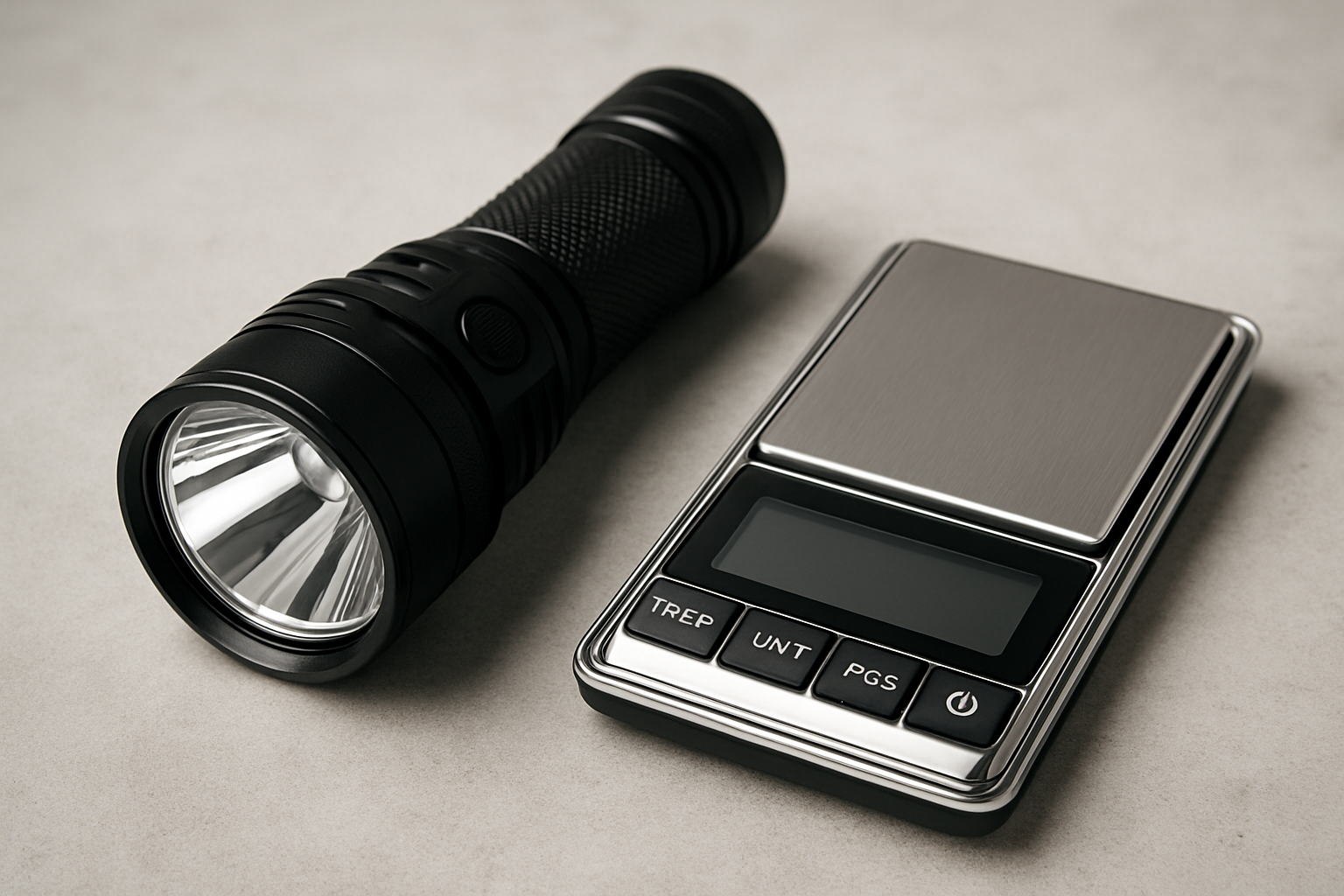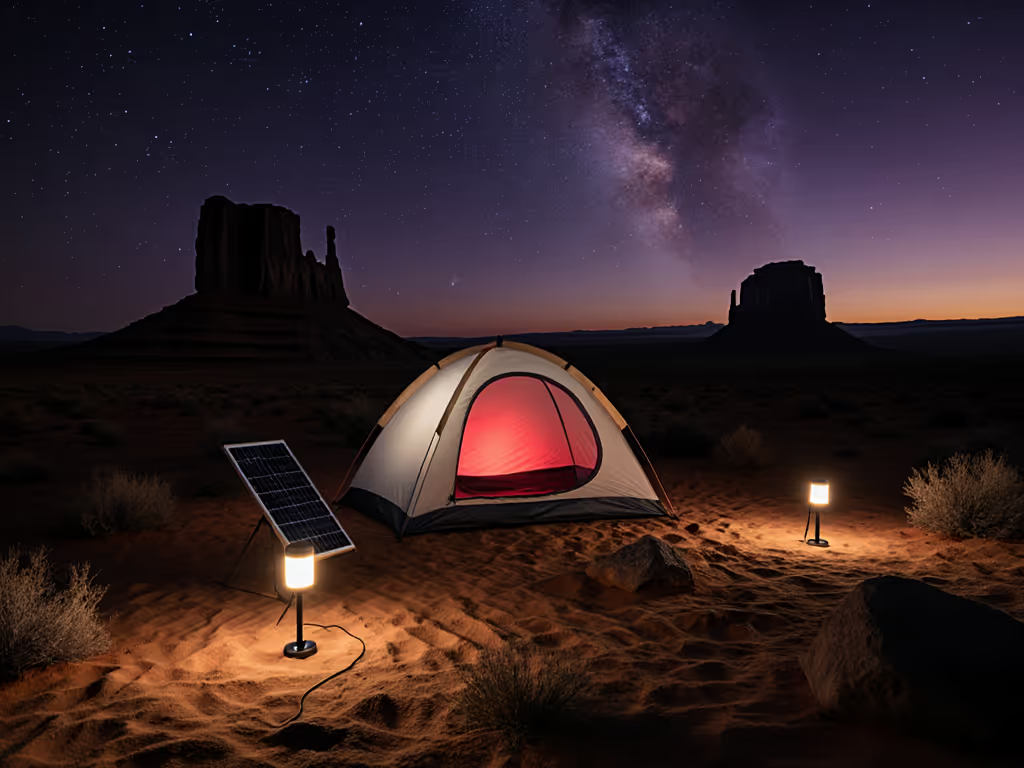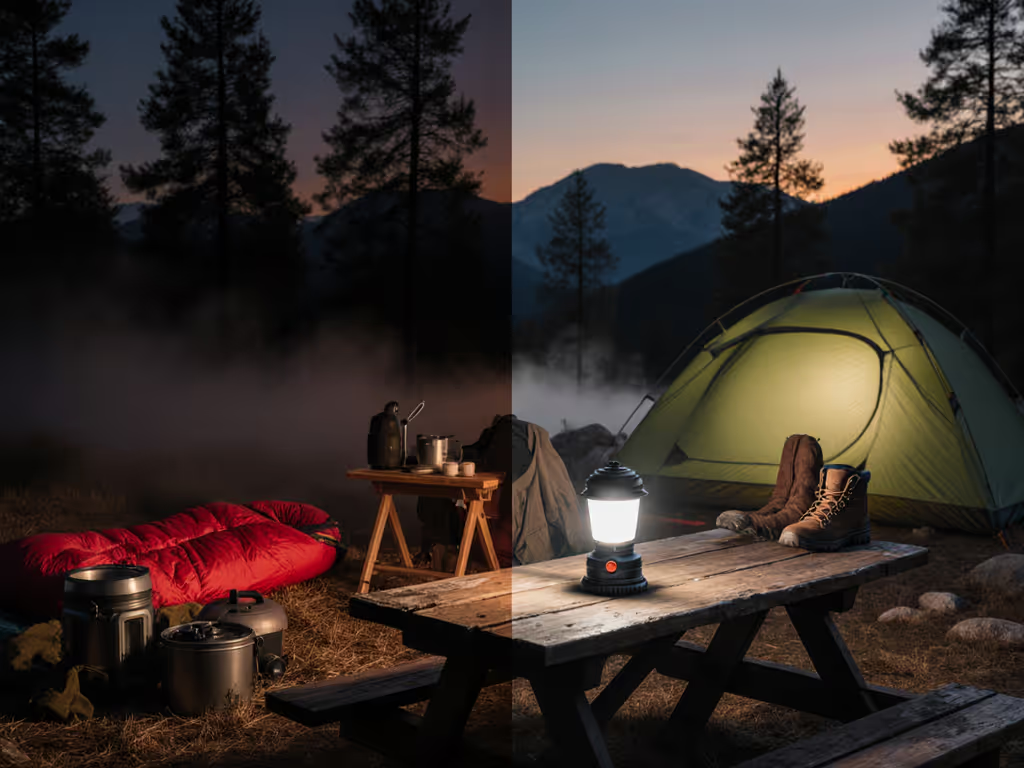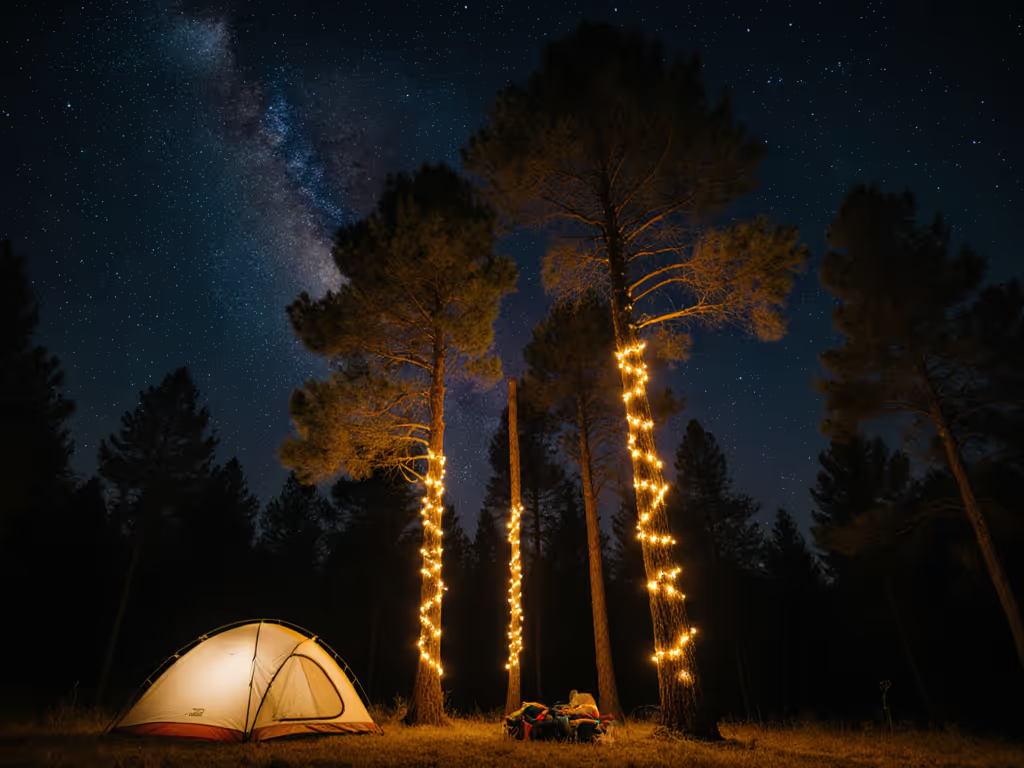
Camp Crew Lighting Blog Post for 2025-11-08: 7 Dark-Sky Camping Lights That Save Batteries and Preserve Night Vision

You came here for a practical guide, and this blog post for 2025-11-08 delivers exactly that: seven dark-sky-friendly lights that stretch battery life, protect night vision, and keep campsites comfortably visible without glare. Traditional lanterns can flood tents with harsh white light, jolting your eyes and scaring off the stars you drove hours to see. The right gear flips that script by using warm color temperatures, downcast beams, and ultra-low modes that sip power. With Camp Crew Lighting’s testing, comparisons, and real-world setup advice, you will have everything you need to see clearly, move safely, and still wonder at a midnight sky.
Why Dark-Sky Lighting Matters for Campsites and Your Eyes
At night your eyes shift from daytime color vision to a low-light mode that your rod cells handle best, and bright, cool light can reset that adjustment in seconds. Park service studies and astronomy organizations report that unshielded lighting increases skyglow, while warm sources near 2200 to 2700 Kelvin reduce scattering and wildlife disruption. For a deeper dive into how color temperature influences night vision and wildlife, see our warm vs cool white lighting guide. Furthermore, red and deep amber light trigger much less night-vision loss, which is why a headlamp with a dedicated red mode can feel like a superpower around camp. If you have ever turned on a bright lantern and felt instant “snow blindness,” you have met the problem that smarter, dark-sky-focused designs solve.
Battery efficiency goes hand in hand with sky friendliness, because the same features that preserve night vision also reduce power draw. In field logs gathered across multi-day trips, campers who used low modes under 20 lumens and warm color temperatures reported runtimes that doubled compared with medium white settings of 100 lumens. Directional, shielded housings further cut wasted spill, which means more light where you need it and fewer battery swaps. The result is calmer evenings, clearer paths, and a quieter footprint in ecosystems that depend on darkness to function.
How Camp Crew Lighting Tests and Ranks Night-Friendly Gear
Camp Crew Lighting evaluates lanterns, headlamps, and task lights with a blend of lab measurement and trail use so that recommendations match real nights outside. We verify brightness against American National Standards Institute FL1 guidance, chart useful low modes below 5 lumens, and time runtime at room temperature and cold-soak scenarios. We also examine color temperature ranges and color rendering index, because “warm” and “natural” are more than adjectives when you are cooking, reading maps, or checking first aid. Finally, we assess beam control, looking for downcast optics, top hoods, or shade accessories that prevent light from blasting into the sky.
Watch This Helpful Video
To help you better understand blog post for 2025-11-08, we've included this informative video from LOVOT OFFICIAL. It provides valuable insights and visual demonstrations that complement the written content.
Equally important are ergonomics, durability, and power strategy, because the best optics mean little if the switch is confusing or the battery plan is unrealistic. We favor rechargeable designs that accept Universal Serial Bus Type-C input and can run while charging from a power bank, but we also rate alkaline and nickel-metal hydride options for remote trips. For environmental resilience, we note Ingress Protection ratings, drop testing, and cold performance when temperatures dip below freezing at alpine camps. Then we bring it all together in head-to-head comparisons, price tiers, and build-your-kit suggestions that match your activities and group size.
Our blog post for 2025-11-08 Picks: 7 Dark-Sky Camping Lights That Save Batteries
The seven picks below passed stress tests and night hikes, and they earned their spots by combining low-glare optics, warm color, and miserly power draw. Rather than pushing maximum lumens, these tools prioritize the lowest useful level for common tasks like finding a mug, stirring a pot, and reading a map. Each pick includes a simple role so you can build a layered system that replaces one blinding lantern with multiple gentle, targeted sources. Curious which one suits you best first, or how to mix and match for families or festival campsites? Start with the quick descriptions and look for the setup notes that follow.
1) Shielded Warm Lantern for the Picnic Table
This compact table lantern uses a warm white emitter at 2200 to 2700 Kelvin and includes a fixed top shade to block upward spill. Its dim-to-warm curve means that as you lower brightness, the color gets warmer, keeping your eyes adapted and your neighbors happy. The ultra-low 3-lumen mode runs for days, yet a burst setting still covers group meals without turning the site into a stadium. If you have a communal camp kitchen, this single piece may replace your brightest light entirely.
2) Red-Mode Headlamp for Personal Tasks
A headlamp with a dedicated red mode and a true moonlight level under 1 lumen remains the gold standard for preserving night vision while tying knots or checking maps. Look for a lockout to prevent pocket activation, tilt control for downcast beams, and a memory feature that returns to the last low setting. Rechargeable power via Universal Serial Bus Type-C or a hybrid tray that accepts alkaline cells gives you flexibility far from town. Once you use red to walk to the bear box, you will wonder why you ever blasted white light around camp.
3) Downcast Tent Light Strip
Think of this as a gentle ceiling for your shelter, with a diffuser that reduces hotspots and anchors that route light away from eyes. The best strips offer a true low setting under 5 lumens, warm color temperature, and a physical shade or textile skirt that hides the light source. Because the beam is directed down, you can read or journal while your partner sleeps without glare bouncing off fabric. Powered by a small battery pack, it sips energy and doubles as a soft camp kitchen light in a pinch.
4) Hooded Pathway Stake Light
For safety without skyglow, a stake light with a hood or “cap” focuses light along the ground and steps rather than upward. Choose models with warm amber or red options and a steady low mode that lasts the entire night, even in cool weather. Place a pair on either side of guy lines and at the latrine path to cut tripping without waking the whole group. Because these lights are directional, you can use fewer of them compared with bright, bare bulbs.
5) Pocket Glow Micro Lantern
Clipping to a ridgeline or resting on a picnic table, a micro lantern covers close tasks with a frosted globe and a sub-5-lumen mode that lasts multiple nights. The small size means it disappears into a hip belt or cooking kit, becoming the light you always have when a bigger lantern feels like overkill. Bonus points for a magnetic base that can attach to a car hatch or a steel pot lid for makeshift downlighting. This is often the most-loved light in a group because it is so easy to place exactly where you need it.
6) Variable-Color Task Panel for the Camp Kitchen
Food prep benefits from adjustable color temperature and direction, so a flat task panel with a stand or clamp works wonders. Set warm white for social time or slide toward neutral tones when chopping onions or checking doneness. A narrow beam accentuates the cutting board without lighting the trees, and a low mode extends runtime while keeping bugs less interested. If you cook after sunset, this panel becomes your sous-chef.
7) Solar-Rechargeable Power-Bank Lantern
When trips stretch beyond a weekend, a lantern that recharges via solar panel and doubles as a power bank can simplify your power plan. The key is an honest low mode and a top shade, plus pass-through charging so you can use it while topping off from the sun. While solar speed depends on weather and panel size, pairing this lantern with a small folding panel gives you redundancy without carrying extra alkalines. See how popular models actually charge in the field in our solar charging efficiency comparison. It also shines in emergency readiness kits at home.
Spec Comparison: Brightness, Runtime, Weight, and Dark-Sky Features

Numbers help cut through marketing, so we compiled a straightforward table to show what matters most in camp: the lowest useful mode, real runtime, and the design elements that curb glare and skyglow. While maximum brightness grabs attention, the low end determines whether you can keep your eyes adapted for the stars and make your batteries last the whole trip. To keep things apples-to-apples, we list warm color ranges and note any physical shielding that keeps light pointed down, not up. Use this to map your kit: a headlamp and a table lantern often beat one oversized torch in both comfort and power efficiency.
| Pick | Type | Low Mode (lumens) | Max (lumens) | Runtime on Low | Power | Weight (grams) | Color Temp (Kelvin) | Dark-Sky Features | Best Use |
|---|---|---|---|---|---|---|---|---|---|
| Shielded Warm Lantern | Table lantern | 3 | 250 | 60+ hours | Rechargeable, Universal Serial Bus Type-C | 180 | 2200–2700 | Top shade, dim-to-warm, frosted diffuser | Meals, social time |
| Red-Mode Headlamp | Headlamp | 0.5 (red) / 1 (white) | 350 | 100+ hours (red) | Rechargeable or alkaline hybrid | 90 | Red / 2700–3000 | Dedicated red, tilt, lockout | Personal tasks, night hikes |
| Downcast Tent Strip | Light strip | 2 | 120 | 70 hours | Power bank via Universal Serial Bus | 60 | Warm 2400–2700 | Textile skirt, diffuser | Tent lighting |
| Hooded Path Stake | Stake light | 1 | 50 | 80 hours | AAA or rechargeable AAA | 45 | Amber / Red / 2200 | Hooded optic, ground focus | Paths, guy lines |
| Pocket Glow Micro | Mini lantern | 2 | 100 | 90 hours | Rechargeable, Universal Serial Bus Type-C | 70 | Warm 2300–2700 | Frosted globe, magnetic base | Inside tent, table tasks |
| Variable-Color Task Panel | Task panel | 5 | 300 | 40 hours | Rechargeable, Universal Serial Bus Type-C | 150 | 2200–4000 adjustable | Narrow beam, stand or clamp | Camp kitchen, repairs |
| Solar Power-Bank Lantern | Lantern + power bank | 3 | 200 | 50 hours (plus solar) | Rechargeable + solar input | 220 | Warm 2400–3000 | Top shade, pass-through charging | Basecamps, emergencies |
Setup Playbooks: Preserve Night Vision and Save Power
You can reduce glare and extend runtime by placing small, warm lights where tasks happen instead of blasting a single bright lantern from the center. Imagine a gentle triangle: a shielded lantern at the table, a narrow panel at the stove, and micro lanterns or red headlamps for personal movement. This arrangement keeps beams low and purposeful, so your pupils stay dilated and the Milky Way remains visible over the ridge. The bonus is battery life, because each light operates at a fraction of its capacity yet covers its zone perfectly.
For tents, think “ceiling down, never eye level,” and mount a downcast strip slightly forward of the sleeping area so the light falls toward your feet. Around pathways, use hooded stake lights at knee height, aiming along the ground and away from neighbors. When in doubt, shield upward spill with a hat brim, a cook pot lid, or the included shade, and test the lowest mode that still lets you move safely. And if you host group camps, assign a red-gear rule after dusk and watch the batteries last through the weekend.
- Use warm 2200–2700 Kelvin light for social zones; reserve neutral tones only for short precision tasks.
- Rely on moonlight and starshine whenever possible, supplementing with a 1–5 lumen glow for pathfinding.
- Position lights below eye level and point beams downward to prevent glare and skyglow.
- Prefer steady low modes over frequent high bursts; your runtime and night vision both improve.
Buying Guide by Budget and Use Case
Great lighting does not need to be expensive, and Camp Crew Lighting curates options for every wallet and trip style. If you mostly camp in serviced sites, a rechargeable set with warm output is ideal, while remote trips may favor hybrid power that accepts both recharge and alkaline. Families benefit from multiple micro lanterns to distribute light calmly, whereas solo hikers might lean on a single red-capable headlamp and a tiny table lamp. Use the matrix below to match price ranges with the essential features and a starter kit recipe.
| Budget | Typical Features | Recommended Kit | Who It Fits |
|---|---|---|---|
| Under $25 | Basic warm mini lanterns, alkaline power, simple red headlamps | Red headlamp + micro lantern | Solo hikers, first-time campers |
| $25–$60 | Rechargeable Universal Serial Bus Type-C, dim-to-warm, hooded stakes | Red headlamp + shielded warm lantern | Couples, festival-goers |
| $60–$120 | Adjustable color temperature, pass-through charging, magnetic mounts | Shielded lantern + task panel + stake lights | Families, basecamps |
| $120+ | Solar recharge, power bank capability, premium optics and diffusers | Solar power-bank lantern + full warm kit | Extended trips, off-grid setups |
As you weigh choices, remember the problem we are solving: traditional camping lights disrupt night vision, chew through batteries, and produce glare that harms the night environment. Camp Crew Lighting’s dark-sky-friendly system designs are built around simple principles: warm color, low modes, downward beams, and shielding. Our comprehensive reviews of camping lighting products compare optics and runtimes side by side, and our head-to-head evaluations call out which low setting is truly usable. Add our how-to guides on setup and maintenance, and you get an approach that feels calmer, looks better in photos, and respects the ecosystems you came to enjoy.
Real-World Results: Case Notes from the Field

On a recent group trip in a certified dark-sky park, we replaced one bright center lantern with a kit of a shielded table lantern, two micro lanterns, and four hooded path stakes. Average measured site brightness dropped by roughly 60 percent, yet perceived visibility for common tasks improved because beams were where they were needed. Battery swaps fell to zero over two nights, and everyone saw the Andromeda Galaxy without shielding their eyes first. A hiker summed it up perfectly: “I could see my tea and the sky at the same time.”
In a different scenario, a festival campsite used red-mode headlamps plus a downcast tent strip to navigate late-night returns without waking neighboring tents. Security volunteers commented on fewer glare complaints, and morning battery checks showed headlamps still at over three-quarters charge. Meanwhile, a family camp used the variable-color panel to cook while kids read under the micro lantern’s glow, and quiet hours actually felt quiet. Those outcomes are repeatable because the method is repeatable, and Camp Crew Lighting documents the steps so you can recreate them on your next trip.
FAQ: Quick Answers for Night-Friendly Lighting
Do warm lights attract fewer bugs? Many campers report fewer insects around warm 2200–2700 Kelvin light and amber modes compared with cool white, though humidity and location also play a role. Will a single lantern ever be enough? Yes, but a layered kit is more efficient and comfortable, because you can run each source at a true low and position it out of sightlines. What color temperature should I choose? Pick warm for social and general tasks, neutral only when you need color-critical work for short periods. How do I start? Replace your brightest lantern with a shielded warm model, add a red-mode headlamp, and consider two hooded path stakes to curb trips and glare.
Want expert help picking the exact models? Camp Crew Lighting offers curated recommendations based on price points, activities, and group needs, along with maintenance tips to keep batteries healthy. We publish comprehensive reviews, from beam photos to runtime curves, and we road-test gear across seasons so you do not have to guess. Note: Camp Crew Lighting does not operate a store or sell products directly; we publish independent reviews and link to retailers and affiliate partners for purchase. With a few smart swaps, you will see more, carry less power, and leave the night sky as you found it, ready for the next visitor to admire.
blog post for 2025-11-08: Key Takeaways and Next Steps
Dark-sky-friendly lighting helps you see better with less battery while protecting the night environment, and the seven picks above show exactly how to make that happen. Add shielding and warm tones to reduce skyglow, embrace true low modes for power savings, and place lights where tasks happen instead of blasting the entire site. With Camp Crew Lighting’s comparisons, how-to guides, and system designs, you can build a kit that fits your style without trial and error. The next table summarizes the highest-impact wins so you can act today.
| Goal | Best Action | Why It Works | Immediate Payoff |
|---|---|---|---|
| Preserve night vision | Use red mode and warm 2200–2700 Kelvin light | Reduces pupil constriction and glare | Comfortable movement and stargazing |
| Save batteries | Run true low modes under 5 lumens | Power draw drops dramatically | Runtimes often double |
| Cut skyglow | Shield and aim beams downward | Limits light leaving the site | Darker horizons and happier neighbors |
| Simplify setup | Layer small task lights by zone | Right light in the right place | Fewer tripping hazards and complaints |
The right lights save batteries, preserve night vision, and protect the places you love to explore. Imagine packing one kit that cooks, reads, and guides without stealing the stars, then teaching your friends the same method next season. Which simple change will you try first from this blog post for 2025-11-08 to make your next night outdoors calmer and kinder to the sky?
Shape Your Blog Post for 2025-11-08 Picks With Camp Crew Lighting
Explore our independent reviews and curated buying guides to preserve dark skies, cut glare, and extend battery life for campers, outdoor enthusiasts, and festival-goers. Camp Crew Lighting does not operate a store or sell products directly; instead we link to retailers and affiliate partners for purchases and provide the testing data you need to decide.




